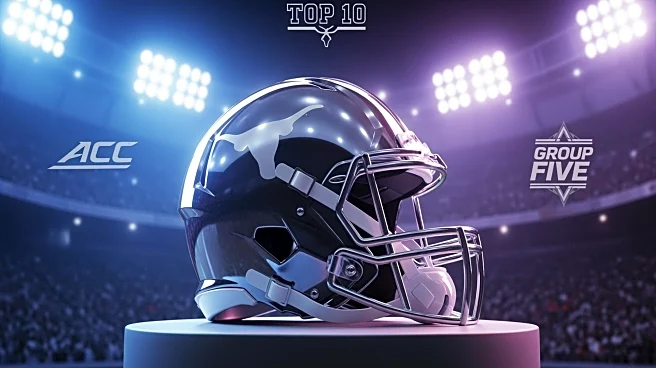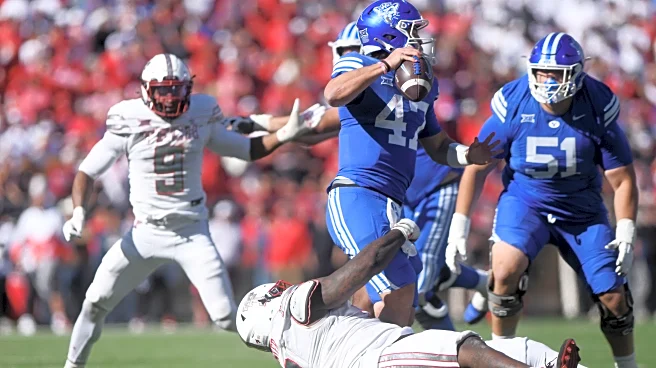What's Happening?
Texas has re-entered the top 10 of The Associated Press college football poll, marking a significant comeback after being knocked out of the Top 25 following a loss to Florida. The Longhorns, who were the preseason No. 1, have climbed back to No. 10 after four
consecutive wins. Meanwhile, the Atlantic Coast Conference (ACC) has five teams ranked in the Top 25 for the first time this season, reflecting a competitive landscape. Ohio State maintains its position at No. 1, followed by Indiana, Texas A&M, Alabama, and Georgia. The Group of Five conferences also see representation in the Top 25, with James Madison and South Florida making appearances.
Why It's Important?
The reshuffling of college football rankings has implications for the upcoming playoff bracket, influencing team strategies and fan engagement. Texas's return to the top 10 boosts its visibility and potential playoff prospects, while the ACC's strong presence highlights the conference's competitive depth. The inclusion of Group of Five teams like James Madison and South Florida underscores the growing influence of smaller conferences in the national landscape. These developments can affect recruitment, sponsorships, and media coverage, impacting the financial and strategic aspects of college football programs.
What's Next?
As the playoff bracket approaches, teams will focus on securing their positions through upcoming matches. Texas faces a crucial game against No. 5 Georgia, which could further alter rankings. The ACC teams will continue to vie for dominance, potentially affecting their playoff bids. The College Football Playoff committee's next rankings will provide further clarity on the Group of Five's standing, influencing postseason opportunities. Stakeholders, including coaches and athletic directors, will strategize to maximize their teams' chances in the playoffs.
Beyond the Headlines
The evolving college football rankings reflect broader trends in sports management and competition. The rise of Group of Five teams challenges traditional power dynamics, promoting diversity in competitive sports. This shift may encourage more equitable resource distribution and investment in smaller programs, fostering a more inclusive sports environment. Additionally, the rankings influence fan engagement and regional pride, contributing to cultural and social dynamics within college communities.















